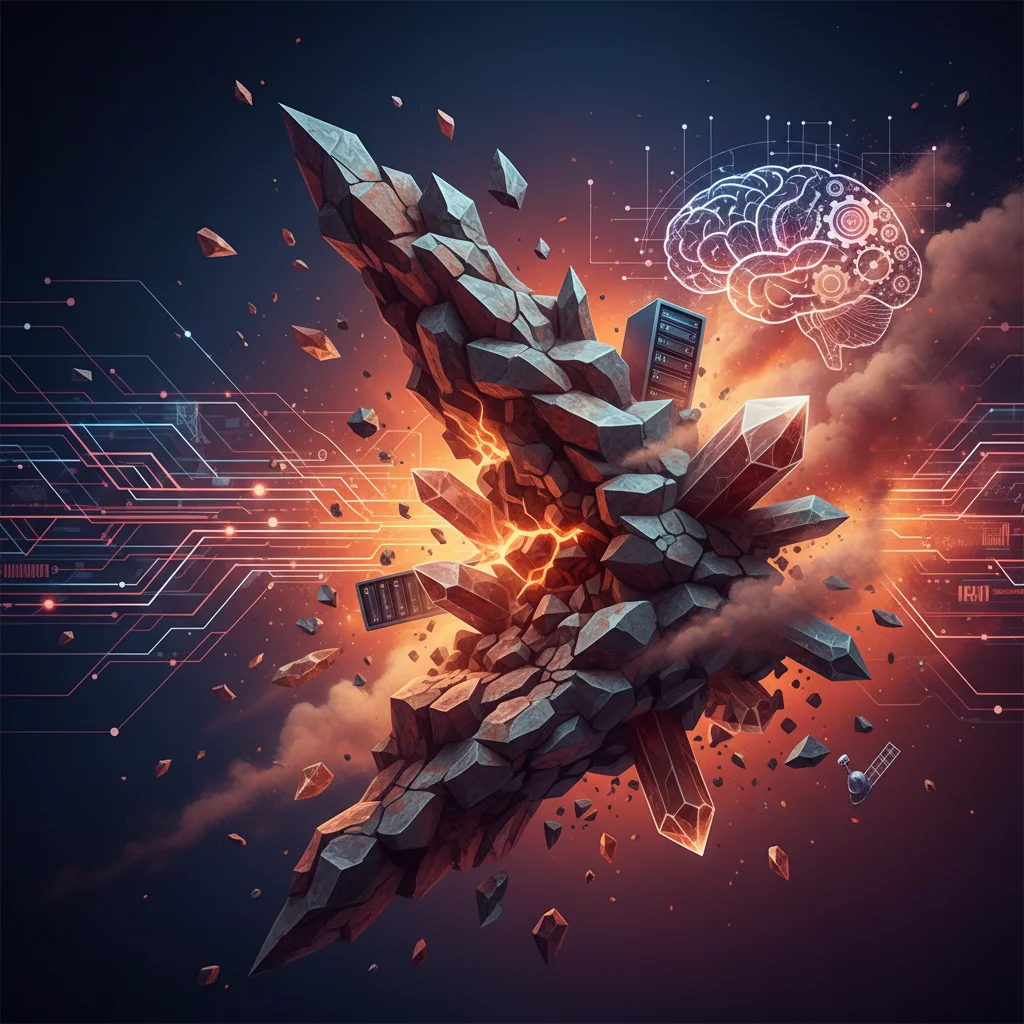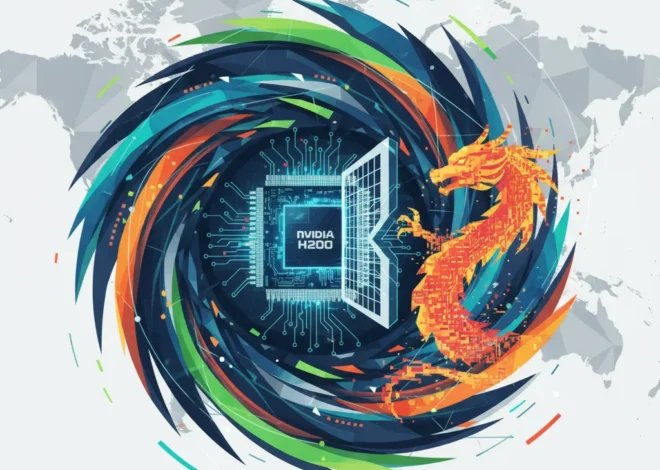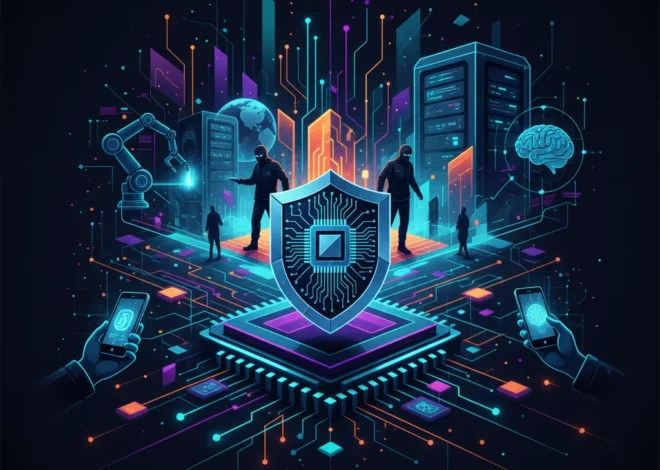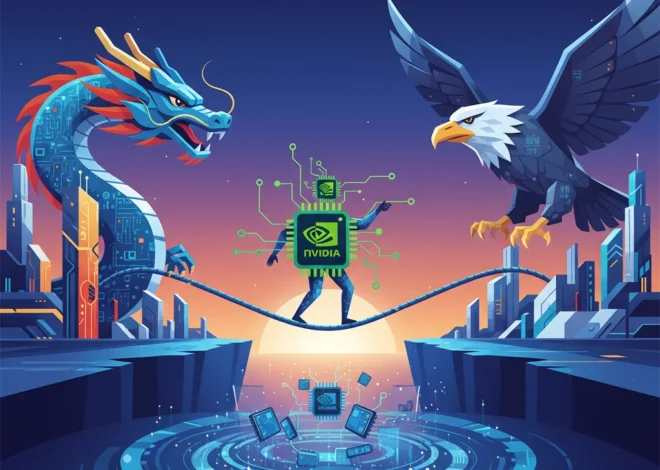
Beyond the Code: Why a Global Showdown Over Dust and Rocks Could Halt the AI Revolution
As a developer, entrepreneur, or tech professional, your world revolves around elegant code, scalable cloud architecture, and disruptive software. You’re focused on building the next big thing in artificial intelligence, perfecting a SaaS platform, or optimizing a machine learning model. But what if the biggest threat to your project isn’t a bug in your code or a competitor’s launch, but a geopolitical dispute over a handful of obscure metals you’ve probably never heard of?
Right now, a high-stakes drama is unfolding between the European Union and China that strikes at the very heart of the global tech ecosystem. It’s a conflict fought not with armies, but with export permits and diplomatic pressure, and the battleground is the supply chain for semiconductors and the rare earth elements that make our digital world possible. Top EU officials are scrambling to de-escalate the situation, but the implications are already sending shockwaves through the industry, from the largest data centers to the smallest startups.
This isn’t just a headline for economists; it’s a critical issue that could define the next decade of tech innovation. Let’s break down what’s happening, why it matters to you, and what it signals for the future of technology.
The Dragon’s New Teeth: China’s Export Controls
The immediate trigger for this crisis was Beijing’s decision to impose export controls on two key materials: gallium and germanium. To the average person, these names sound like something from a high school chemistry class. To the tech industry, they are indispensable. These aren’t just “nice-to-haves”; they are foundational components for the high-performance electronics that power everything.
In response, the EU’s trade chief, Valdis Dombrovskis, is preparing for a trip to Beijing, where this issue will be at the top of the agenda. The EU’s message is clear: these restrictions are a major concern. Thierry Breton, the EU’s internal market commissioner, has emphasized the need to avoid a “tit-for-tat” escalation, a fear that underscores the fragile interdependence of the global tech supply chain. The EU is trying to walk a fine line—asserting its need for these materials while trying to cool geopolitical tensions that could make things much worse (source).
But why these metals, and why now? To understand the gravity of the situation, we need to look at what they actually do.
The Unsung Heroes of Modern Technology
Gallium and germanium are the secret sauce in a vast array of cutting-edge technologies. Their unique properties make them essential for creating the next generation of semiconductors, which are the brains behind every advanced system we build. Here’s a quick look at their critical roles:
| Material | Key Applications in Tech | Why It’s Critical for AI, Cloud & Software |
|---|---|---|
| Gallium (specifically Gallium Nitride, GaN) | High-frequency semiconductors, 5G base stations, advanced radar systems, high-efficiency power adapters, and LEDs. | Essential for building the powerful, energy-efficient servers that run AI and machine learning workloads in the cloud. GaN chips reduce power consumption and heat in data centers, a massive operational cost. |
| Germanium | Fiber-optic cables, infrared optics (night vision), and specialized high-speed computer chips. | The backbone of the internet. Without germanium-doped fiber optics, the high-speed data transfer required for modern SaaS applications and massive data-set processing for AI would be impossible. |
| Rare Earth Elements (a broader group) | Powerful magnets used in electric vehicle motors, wind turbines, hard drives, and consumer electronics like smartphones. | While not the focus of the current dispute, they are part of the same strategic vulnerability. They are crucial for the hardware that stores the data our software and algorithms process. |
As you can see, this isn’t about a single product. It’s about the fundamental building blocks of our entire digital infrastructure. A shortage of these materials means a bottleneck for everything from cloud expansion to the development of more powerful AI chips.
The Small Smartphone Paradox: What a Niche Market Failure Teaches Every Tech Startup
The Geopolitical Chessboard: More Than Just Metals
China’s move didn’t happen in a vacuum. It’s widely seen as a retaliatory measure against Western restrictions, particularly from the US, on the sale of high-end semiconductor technology to China. This is a classic example of a “chokepoint” strategy: if you restrict my access to advanced chips, I’ll restrict your access to the raw materials needed to make them.
This dynamic is forcing a massive strategic rethink in Europe. The EU’s goal is to achieve “strategic autonomy”—the ability to act independently without being overly reliant on other nations for critical resources. This has led to initiatives like the EU Chips Act, which aims to bolster the continent’s semiconductor manufacturing capabilities. However, as the current dispute shows, manufacturing chips locally is useless if you can’t get the raw materials.
This is the new reality of “techno-nationalism,” where technology supply chains have become a primary theater for geopolitical competition. For decades, the tech industry operated on a globalized model focused on efficiency and cost. Today, the driving forces are resilience, security, and national interest.
The Ripple Effect: From Brussels to Your Bottom Line
So, how does a diplomatic meeting in Beijing affect your daily stand-up or your startup’s funding pitch? The connections are more direct than you might think:
- Rising Hardware Costs: Any restriction on supply, real or threatened, will drive up prices. The servers you need for your cloud deployment, the GPUs required for AI training, and even the laptops your team uses will become more expensive. For bootstrapped startups, this could be an existential threat.
- Innovation Bottlenecks: The development of next-generation technologies—from 6G to quantum computing and more powerful AI accelerators—relies on access to these advanced materials. A prolonged dispute could slow the pace of underlying hardware innovation, creating a ceiling for software advancements.
- A Premium on Efficiency: This crisis puts a new premium on software optimization. Developers who can write code that achieves the same results with less computational power will become invaluable. This could accelerate the adoption of more efficient programming languages and architectures, as well as automation tools that maximize hardware utilization.
- Supply Chain Volatility: Entrepreneurs and VCs will now have to factor geopolitical risk into their business models. A company’s reliance on a single-source hardware supplier is no longer just a business risk; it’s a geopolitical one. Diversification and resilience will become key selling points.
Disney's Churn Crisis: What a Celebrity Scandal Teaches Us About AI, SaaS, and the Future of Tech
Internal Tensions: Europe’s Own Tech Governance Challenges
Adding another layer of complexity, the EU is also grappling with its own internal tech policy challenges. In a separate but related development, campaigners have filed a complaint against the appointment of a former tech lobbyist to a senior role at the Irish data privacy watchdog (source). This highlights the ongoing struggle within Europe to establish robust, independent regulatory bodies that can effectively govern the tech sector.
While seemingly disconnected, this issue speaks to the same core theme: Europe is in a race to build a coherent and effective technology strategy. Whether it’s securing raw material supply chains from external pressures or ensuring its own regulatory institutions are free from undue industry influence, the challenge is immense. For the tech industry, this means navigating a rapidly evolving and sometimes contradictory landscape of regulations and strategic priorities.
Conclusion: The Dawn of the Geopolitical Developer
The dispute over gallium, germanium, and rare earths is a stark reminder that the world of bits and bytes is built on a foundation of atoms—atoms that are increasingly at the center of global power struggles. The era of frictionless, globalized tech supply chains is likely behind us. The future will be defined by a more fragmented, complex, and unpredictable landscape.
For those of us building the future, this requires a new mindset. We must become “geopolitical developers,” aware that the code we write and the platforms we build are subject to forces far beyond our control. Success will no longer just be about technical excellence; it will also depend on strategic foresight, adaptability, and a deep understanding of the complex world in which our technology operates.
The negotiations in Beijing are about more than just trade policy. They are a preview of the challenges and constraints that will shape the next wave of technological innovation. The question for all of us is: are we ready to build in this new reality?


